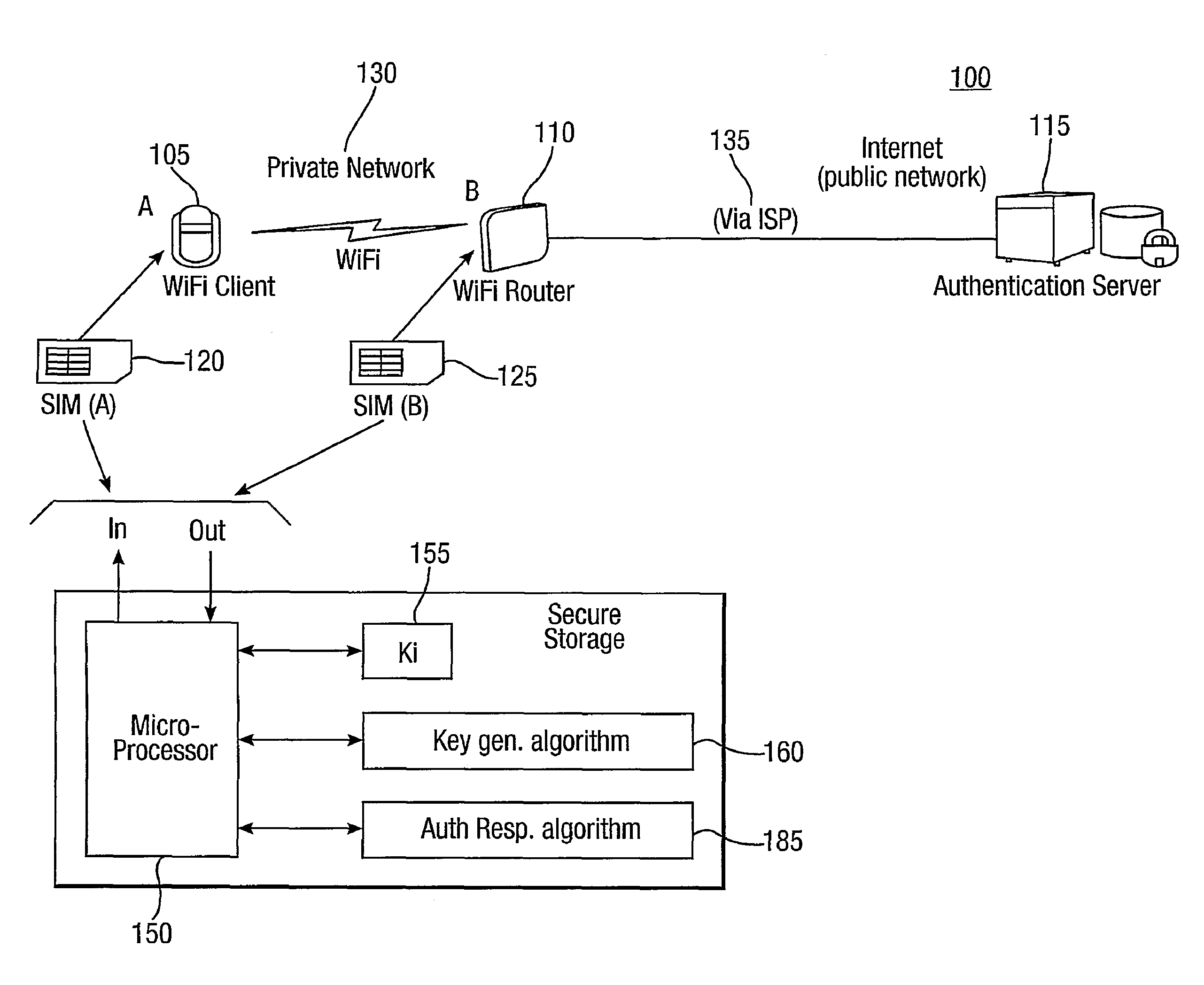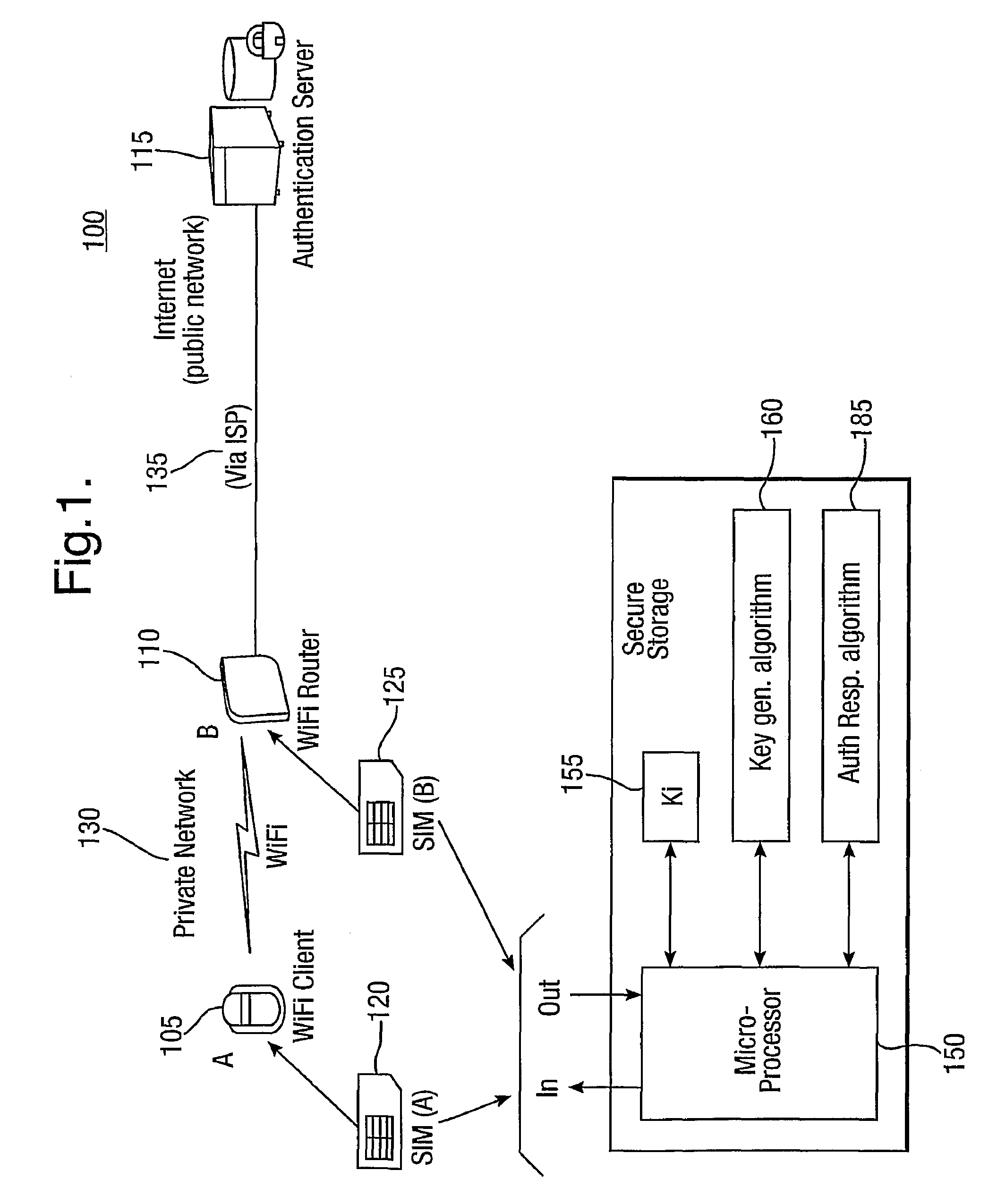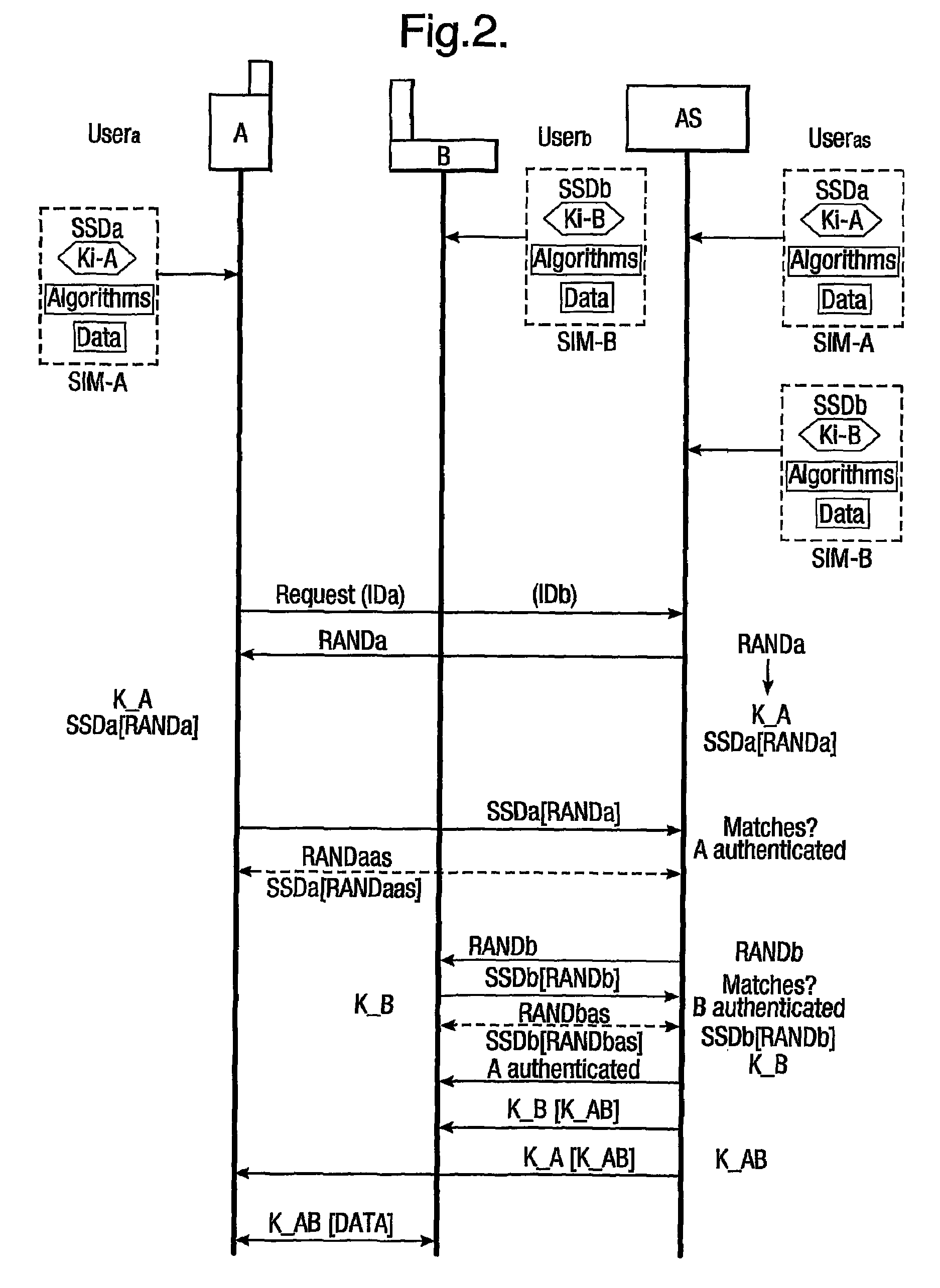Provision of secure communications connection using third party authentication
a technology of secure communication and authentication, applied in the field of communication, can solve the problems of inconvenient other types of networks, the problem of ensuring the security of the connection between two parties, and the ongoing problem of providing secure communications links or connections over an insecure network
- Summary
- Abstract
- Description
- Claims
- Application Information
AI Technical Summary
Benefits of technology
Problems solved by technology
Method used
Image
Examples
first embodiment
[0030]FIG. 1 illustrates a wireless communication system 100 and comprising a first or client device (A) such as a mobile phone 105, a second device (B) or communications server such as a WiFi router 110, and an authentication server (AS) 115. The client device 105 can communicate with the wireless server 110 using a WLAN 130 or private wireless network such as a WiFi network. The wireless server 110 communicates with the authentication server using another network 135 such as the Internet. In order to communicate securely with each other over the WiFi network 130, the client device 105 and wireless server 110 must share a secret key which they both use to encrypt and decrypt packets sent between them. Traditionally provision of these keys has been provided by users of the two devices (105, 110) manually entering a common password. In this embodiment however, two SIM cards are used, a first SIM (A) card 120 for the first device, in this embodiment a wireless client device 105, and ...
second embodiment
[0045]FIG. 6 shows a second embodiment in which the authentication and session key agreement between the authentication server and the client, and between the authentication server and the wireless server are both carried out using the EAP-SIM (extensible authentication protocol-subscriber identity module) protocol. The authentication request from the client triggers the EAP-SIM protocol to mutually authenticate the client and the authentication server, and to agree on or distribute a session key MK_C-AS (K_A in FIG. 2). Once this is completed, the same protocol (EAP-SIM) is used between the wireless server and the authentication server for mutual authentication and session key MK_WR-AS agreement (K_B in FIG. 2). A common key for example the client session key MK_C-AS (K_A in FIG. 2) can then be securely provided from the authentication server to the wireless server, who then communicates securely with the client using this. Alternatively a new common key (K_AB) may be generated and...
PUM
 Login to View More
Login to View More Abstract
Description
Claims
Application Information
 Login to View More
Login to View More - R&D
- Intellectual Property
- Life Sciences
- Materials
- Tech Scout
- Unparalleled Data Quality
- Higher Quality Content
- 60% Fewer Hallucinations
Browse by: Latest US Patents, China's latest patents, Technical Efficacy Thesaurus, Application Domain, Technology Topic, Popular Technical Reports.
© 2025 PatSnap. All rights reserved.Legal|Privacy policy|Modern Slavery Act Transparency Statement|Sitemap|About US| Contact US: help@patsnap.com



